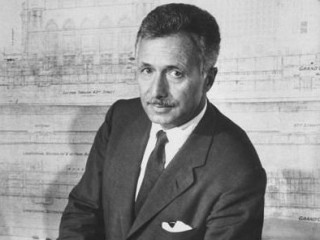
Pietro Belluschi biography
Date of birth : 1899-08-18
Date of death : 1994-02-14
Birthplace : Ancona, Italy
Nationality : American
Category : Arhitecture and Engineering
Last modified : 2012-01-18
Credited as : architect, won the 1972 AIA Gold Medal, leader of the Modern Movement in architecture
0 votes so far
Italian-born architect and engineer, he settled in the USA in the 1920s, and joined the Portland, OR, office of the architect Albert Ernest Doyle (1877–1928) in 1925, which he reorganized under his own name in 1943.
In the 1930s Belluschi established his architectural reputation with several commercial, domestic, and religious buildings, among which the Art Museum (1931–8), Finley Mortuary (1936–7), Sutor House (1937–8), and Church of St Thomas More (1939–41), all in Portland, should be mentioned. With his US National Bank of Oregon, Salem (1940–1), he showed an inclination to International Modernism, a tendency reinforced with his Equitable Life Assurance Building, Portland (1944–8), one of the first examples of an aluminium-and-glass curtainwall enclosing a concrete-framed tower, a building-type that became very common thereafter.
From 1951 he was appointed Dean of the School of Architecture and Planning at Massachusetts Institute of Technology (MIT), and his practice was absorbed by Skidmore, Owings, & Merrill (SOM). Fond of the phrase ‘eliminate, refine, and integrate’, he had built up a huge commercial practice, and collaborated with others while involved at MIT, notably with Eduardo Catalano (1917– ) and Helge Westermann for the Juilliard School of Music and Alice Tully Hall at the Lincoln Center, New York (1955–70), with a travertine marble façade masking the buildings behind it.
On relinquishing his position at MIT in 1965 he again established an architectural practice in Portland, often working with other architects. Among the laterworks are numerous churches, the San Francisco Symphony Hall, CA (with SOM–1980), and the Baltimore Symphony Hall, MD (with Jung, Brannen, Associates–1982).He won the 1972 AIA Gold Medal.
















